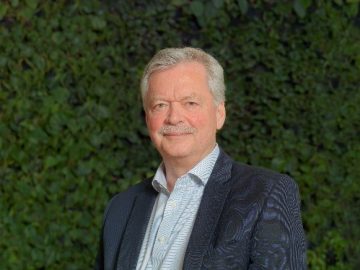How cities enable Denmark’s green transition

Finn Mortensen
Executive Director
State of Green
Denmark
Cities are home to over half of the world’s population. As such, they are hotspots of the impacts and risks that climate change has brought about. But they also hold a crucial part of the solution. Through years of experience, Denmark has made cities one of its strongholds and key enablers of green transition.
Creating liveable cities means taking a holistic approach through public-private partnerships and cross-sector collaboration. When implementing urban development projects, the concern for the environment, the people and the businesses must go hand in hand. Looking at Denmark, the notion of public-private climate action has proven fruitful in especially three areas. Namely blue infra-structure, energy-efficient buildings and biking.
Working together on water
From floods to water scarcity, water crises linked to climate change are among the biggest threats to our cities. In 2011, Copenhagen was hit by an extreme cloudburst, where rainfall was measured at up to 200mm in the hardest-hit places. In the end, the damages amounted to costs around EUR 1.6 billion, making it the most expensive natural disaster in Europe that year. The event proved to be a watershed moment for how Danish cities approach water-related challenges and heighten the importance of an integrated approach to climate change adaptation, urban development, and water management.
Now, instead of viewing rainwater as something to dispose of and hide in sewers, most Danish cities combine underground solutions with green surface solutions that utilise the water to en-hance the lives of their citizens. Cities such as Odense, Viborg, and Copenhagen, have adopted long-term integrated plans for climate change adaptation, where creating climate-resilient cities also entails heightening liveability.
Building upon a long tradition of facilitating dialogue between public and private, Danish learn-ings show that a key puzzle piece in realising ambitions on water for greener cities is an inclusive approach to stakeholder involvement. As every conceivable part of society is affected by how we manage water challenges, the best solutions emerge when all voices are heard – from city authori-ties and utilities to companies and citizens.
Benefits of bettering buildings
As buildings account for almost 40% of global energy consumption, they represent a pressing but promising element in the green transition. Promoting energy-efficient buildings has long been a cornerstone of Denmark’s green ambitions, and Danish cities are leading the way.
Cities like Sønderborg, recently labelled “the energy efficiency capital of the world”, have launched initiatives targeting energy-inefficient buildings. They range from educating craftsmen in energy consultancy and guiding homeowners through renovation projects, to introducing acces-sible financing models and coordinating communication amongst stakeholders in the building and renovation market. Such initiatives have led to increased enthusiasm about investing in energy renovation for both homeowners and public authorities with large building portfolios. In Sønder-borg, 60% of homeowners that received guidance subsequently invested an average of EUR 20,150 in energy renovations.
Crucially, the efforts of Danish cities have shown that pursuing energy efficiency in our buildings is not just about lowering emissions and energy demand. There are also great economic and social benefits to be reaped. By creating green, efficient and healthy buildings, we can make the urban built environment more sustainable across the triple bottom line.
Bicycling across borders
In Denmark, we have over 100 years of experience in planning for bicycle traffic in and around our cities. Today, 9/10 Danes own a bicycle, and cycling accounts for more than a quarter of trips under five kilometers. Every day, Copenhageners bike a distance equivalent to 35 times around the globe.
This has led Copenhagen and 30 surrounding municipalities to jointly invest in so-called “bicycle superhighways”. A cycle superhighway is a cycle track, where the needs of the two-wheeled commuters have been given the highest priority. 10 bicycle superhighways have already been es-tablished, and the aim is to have 60 routes covering more than 850 kilometers nationally.
Collaboration across regions and municipalities on improved bicycle infrastructure is a yet great example of the Danish tradition of enabling broad dialogue that leads to tangible solutions. Final-ly, it highlights the fact that no city is an island.
Climate change does not know borders, and neither should climate action. If we are to realise the immense potential of our cities to drive the green transition, we must pursue international cooper-ation and learn from each other wherever possible.
From happy cyclists to green constructions, I hope that Danish learnings may help other cities find solutions to the common climate challenges we all face.
Expert article 3329
>Back to Baltic Rim Economies 5/2022
To receive the Baltic Rim Economies review free of charge, you may register to the mailing list.
The review is published 4-6 times a year.
